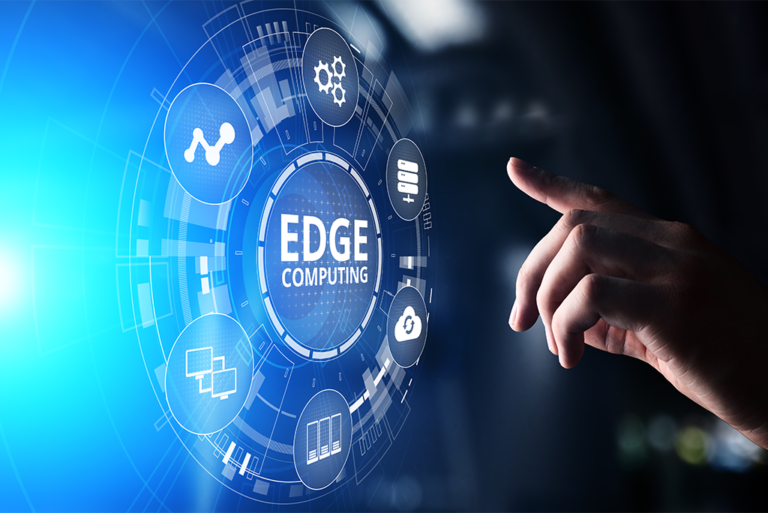Edge computing is a transformative technology that brings data processing closer to the source of data generation—such as sensors, devices, or local servers—rather than relying solely on centralized cloud systems. This approach significantly reduces latency, enhances real-time decision-making, and improves bandwidth efficiency. As industries increasingly adopt IoT devices and demand faster, smarter services, edge computing is rapidly becoming a cornerstone of modern digital infrastructure, enabling everything from autonomous vehicles to smart cities.
What is Edge Computing?
Edge computing is a distributed computing paradigm that processes data near the source of generation rather than sending it to a centralized data center. By analyzing data locally—on the “edge” of the network—organizations can respond faster, reduce bandwidth usage, and improve overall system reliability.
It’s particularly useful in scenarios where speed, efficiency, and real-time data analysis are critical. Think of it as bringing the power of the cloud closer to where things actually happen.
Key Benefits of Edge Computing
Ultra-Low Latency
By processing data on-site, edge computing drastically reduces the time it takes to receive and act on information. For applications like autonomous vehicles, robotics, or augmented reality, every millisecond matters.
Enhanced Security & Privacy
Data processed at the edge minimizes the amount of sensitive information sent over the internet. This localized control reduces vulnerabilities and helps comply with data protection regulations like GDPR and HIPAA.
Cost Efficiency
With edge computing, only essential data is transmitted to the cloud, reducing bandwidth usage and cloud storage costs. It’s a smart, scalable approach to managing data-heavy workloads.
Real-Time Data Processing
Industries like manufacturing and healthcare depend on immediate data feedback. Edge computing ensures that sensors and IoT devices operate with minimal delay, enabling fast anomaly detection, predictive maintenance, and optimized operations.
Scalable Infrastructure
Edge computing supports a modular and scalable architecture. As businesses grow, they can deploy additional edge nodes without reworking their entire system—offering flexibility and future-proofing.
Common Challenges of Edge Computing
Despite its advantages, edge computing also comes with challenges:
- Management Complexity: Maintaining a large number of distributed edge devices requires robust monitoring tools and experienced teams.
- Data Consistency: Synchronizing data across multiple locations in real-time can be technically demanding.
- Integration Hurdles: Seamlessly blending edge systems with existing IT infrastructure requires careful planning and specialized expertise.
- Security Management: While edge computing enhances privacy, each node is a potential attack surface if not properly secured.
You may also like it:
5G vs 6G: An In-Depth Look at the Future of Mobile Connectivity
Real-World Applications of Edge Computing
Smart Cities
Traffic lights, surveillance cameras, and environmental sensors use edge computing to make cities safer, cleaner, and more efficient in real time.
Healthcare
Edge-enabled medical devices can monitor patient vitals continuously and alert staff to irregularities instantly, improving emergency response and patient care.
Retail
Retailers use edge computing for real-time inventory tracking, smart checkout, and customer behavior analysis—enhancing operational efficiency and shopper experience.
Industrial IoT (IIoT)
Manufacturers deploy edge solutions for predictive maintenance, quality control, and energy optimization—all without needing constant cloud connectivity.
How Nexowa Empowers Your Edge Computing Journey
At Nexowa, we specialize in helping organizations harness the power of edge computing with tailored, scalable, and future-ready solutions. Here’s how we support you:
- Consultation & Strategy Development
We assess your operational needs and design a custom roadmap to integrate edge computing seamlessly into your existing systems. - Custom Solutions Implementation
Our engineers build edge infrastructure suited to your specific industry and use case, maximizing ROI and performance. - Ongoing Support & Optimization
Nexowa provides end-to-end management, monitoring, and updates, ensuring your edge systems remain secure, efficient, and scalable.
By choosing Nexowa, you’re not just adopting a technology—you’re gaining a partner committed to innovation and long-term success.
Future of Edge Computing
Edge computing is on the cusp of explosive growth. As AI, machine learning, and 5G technologies advance, edge systems will become even smarter and more autonomous. From smart factories and connected vehicles to personalized healthcare and immersive retail, edge computing is set to redefine the digital experience across every sector.
Frequently Asked Questions
Is edge computing the same as cloud computing?
No. While cloud computing relies on centralized data centers, edge computing processes data locally at or near the source, offering lower latency and real-time capabilities.
What industries benefit the most from edge computing?
Industries such as healthcare, manufacturing, retail, telecommunications, and transportation gain the most, particularly those requiring real-time decision-making and localized data analysis.
Is edge computing secure?
Yes, but like any system, it depends on proper implementation. Edge computing reduces some risks by keeping data local, but it also requires robust security protocols for each edge node.
How does edge computing reduce costs?
By limiting the amount of data transmitted to centralized servers, edge computing reduces bandwidth usage, storage needs, and reliance on high-cost cloud infrastructure.
Can edge computing work with the cloud?
Absolutely. Many businesses use a hybrid approach, combining edge and cloud to optimize performance, flexibility, and cost-efficiency.
Conclusion
Edge computing is more than just a technological trend—it’s a strategic necessity in the era of connected devices, real-time analytics, and AI-powered automation. Whether you’re looking to boost efficiency, lower latency, or gain a competitive edge in your industry, edge computing provides the infrastructure needed to stay ahead.

